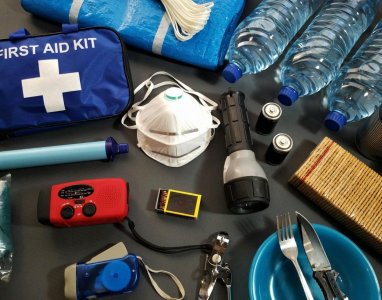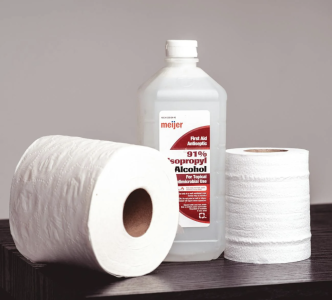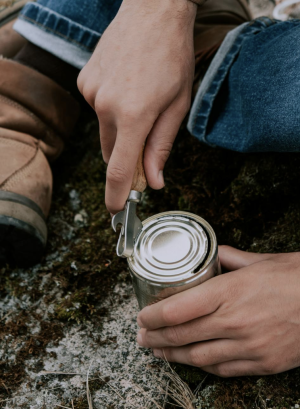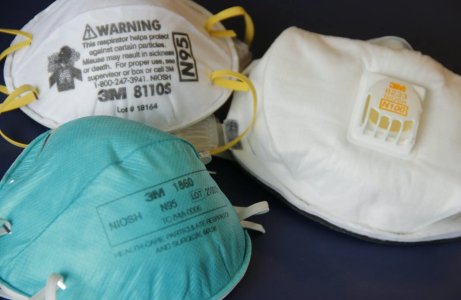The 16 emergency kit essentials experts say every household should have—are you ready?
By
Veronica E.
- Replies 0
Emergencies often strike without warning, and when they do, a little preparation can make all the difference.
Whether it's a power outage, severe storm, or a surprise plumbing disaster, having the right supplies on hand can help you stay calm and in control.
At The GrayVine, we believe peace of mind starts with a well-stocked home emergency kit.
You don’t need to be a survivalist or stockpile for doomsday.
These are practical, expert-recommended essentials that can help you and your family stay safe, comfortable, and connected through unexpected disruptions.
Below, we break down 16 must-have items you’ll want to keep in your emergency kit—plus a few thoughtful extras for good measure.

1. Flashlights (and more than one)
Reliable lighting is crucial during a blackout.
Choose flashlights that can run on batteries, solar power, or a hand crank—and keep at least one in each major room.
Backup lighting like lanterns and waterproof matches is also smart to have on hand.
2. Extra batteries
Stock up on common battery types (like AA, AAA, and 9V) to power flashlights, radios, and medical equipment.
Check for corrosion or expiration at least twice a year.
3. Portable phone charger or power bank
A fully charged power bank can be a lifeline when the power’s out.
Look for one that can recharge your phone multiple times and keep it charged as part of your regular prep.
Also read: On Medicare and headed out of town? What to know before a medical emergency hits
4. Non-perishable food
Pack a mix of ready-to-eat items such as granola bars, vacuum-sealed meals, dried fruit, and trail mix.
Plan for at least three days’ worth per person—and don’t forget your pets.
5. Drinking water and water purification options
Aim for one gallon per person per day for at least three days.
If storage space is limited, supplement with water purification tablets or a compact filter system.
6. Headlamp
Headlamps keep your hands free while offering focused lighting for tasks like cooking or first aid.
Keep one in your kit and another by your bed.
Also read: How much emergency savings is enough? Experts say this number is growing—and here’s how to prepare
7. Sanitation supplies
Hygiene matters, even during a crisis.
Include moist wipes, garbage bags, toilet paper, and hand sanitizer.
Bonus: garbage bags can double as rain ponchos or tarps.

8. Warm blankets or Mylar emergency blankets
Power outages in winter can be dangerous.
Mylar blankets are lightweight, heat-reflective, and take up very little space—pack extras for good measure.
9. Multipurpose tool
A compact tool like a Swiss army knife can help with minor repairs, food prep, and opening containers.
It’s one of the most versatile items you can include.

Also read: State of emergency declared as deadly outbreak hits US farms
10. Personal alarm or whistle
If you need to signal for help or scare off an intruder, these small devices can be surprisingly powerful.
They’re easy to pack and worth having just in case.
11. Important documents and emergency contacts
Keep waterproof, laminated copies of your ID, insurance, medical information, and emergency contact list.
It’ll save time and stress if you need to evacuate.
12. Manual can opener
Don’t rely on electric openers when the power’s out.
A handheld version is essential if you’re packing canned food—and often forgotten.

Also read: Taking stock: Doomsday prepper reveals $430K bunker and how you can start your own emergency stash
13. Battery-powered or hand-crank radio
Stay informed even if the internet is down.
NOAA weather radios can keep you updated on evacuation orders, local hazards, and emergency broadcasts.
14. N95 masks
Air quality can quickly worsen during fires or floods. Keep a few masks in your kit to protect your lungs from smoke, mold, or dust.

15. Duct tape
There’s almost nothing duct tape can’t help fix.
Use it to secure windows, patch leaks, or even build temporary repairs.
Flatten the roll for easy storage.
16. Cash (in small bills)
ATMs and card readers may not work during outages.
Keep enough cash for food, gas, or a short hotel stay—but not so much that it’s a liability.
Also read: Scare in the sky: How a regular American Airlines flight became a fighter jet-escorted emergency
A few thoughtful extras
How to store and maintain your kit
Keep your emergency kit in a cool, dry spot that's easy to access.
Consider one per floor if your home is large.
Set a calendar reminder every six months to check expiration dates, replace used items, and update anything that’s missing or no longer relevant.
As we age, staying ready for the unexpected becomes even more important.
Mobility challenges, medical needs, or living alone can all add extra hurdles during a crisis.
Having the right supplies within reach helps protect your independence and gives peace of mind to both you and your loved ones.
Read next: How at-risk is your area? New 2025 data highlights earthquake vulnerability across the US

What’s in your emergency kit? Have you ever had to use it? Do you have any smart tips or must-haves you’d recommend to others? Drop your suggestions in the comments—your ideas could help someone else feel safer and more prepared.
Whether it's a power outage, severe storm, or a surprise plumbing disaster, having the right supplies on hand can help you stay calm and in control.
At The GrayVine, we believe peace of mind starts with a well-stocked home emergency kit.
You don’t need to be a survivalist or stockpile for doomsday.
These are practical, expert-recommended essentials that can help you and your family stay safe, comfortable, and connected through unexpected disruptions.
Below, we break down 16 must-have items you’ll want to keep in your emergency kit—plus a few thoughtful extras for good measure.

Being prepared brings peace of mind—stocking up now can make all the difference when the unexpected happens. Image Source: Pexels / Roger Brown.
1. Flashlights (and more than one)
Reliable lighting is crucial during a blackout.
Choose flashlights that can run on batteries, solar power, or a hand crank—and keep at least one in each major room.
Backup lighting like lanterns and waterproof matches is also smart to have on hand.
2. Extra batteries
Stock up on common battery types (like AA, AAA, and 9V) to power flashlights, radios, and medical equipment.
Check for corrosion or expiration at least twice a year.
3. Portable phone charger or power bank
A fully charged power bank can be a lifeline when the power’s out.
Look for one that can recharge your phone multiple times and keep it charged as part of your regular prep.
Also read: On Medicare and headed out of town? What to know before a medical emergency hits
4. Non-perishable food
Pack a mix of ready-to-eat items such as granola bars, vacuum-sealed meals, dried fruit, and trail mix.
Plan for at least three days’ worth per person—and don’t forget your pets.
5. Drinking water and water purification options
Aim for one gallon per person per day for at least three days.
If storage space is limited, supplement with water purification tablets or a compact filter system.
6. Headlamp
Headlamps keep your hands free while offering focused lighting for tasks like cooking or first aid.
Keep one in your kit and another by your bed.
Also read: How much emergency savings is enough? Experts say this number is growing—and here’s how to prepare
7. Sanitation supplies
Hygiene matters, even during a crisis.
Include moist wipes, garbage bags, toilet paper, and hand sanitizer.
Bonus: garbage bags can double as rain ponchos or tarps.

Sanitation supplies like wipes, garbage bags, and toilet paper help maintain hygiene and comfort during emergencies. Image Source: Pexels / Donny Fuego.
8. Warm blankets or Mylar emergency blankets
Power outages in winter can be dangerous.
Mylar blankets are lightweight, heat-reflective, and take up very little space—pack extras for good measure.
9. Multipurpose tool
A compact tool like a Swiss army knife can help with minor repairs, food prep, and opening containers.
It’s one of the most versatile items you can include.

A reliable multitool or knife can be a lifesaver—perfect for quick fixes, opening cans, or handling unexpected tasks. Image Source: Pexels / Yevhen Khokhlov.
Also read: State of emergency declared as deadly outbreak hits US farms
10. Personal alarm or whistle
If you need to signal for help or scare off an intruder, these small devices can be surprisingly powerful.
They’re easy to pack and worth having just in case.
11. Important documents and emergency contacts
Keep waterproof, laminated copies of your ID, insurance, medical information, and emergency contact list.
It’ll save time and stress if you need to evacuate.
12. Manual can opener
Don’t rely on electric openers when the power’s out.
A handheld version is essential if you’re packing canned food—and often forgotten.

Don’t overlook the basics—a manual can opener ensures you can access your food when the power’s out. Image Source: Pexels / cottonbro studio.
Also read: Taking stock: Doomsday prepper reveals $430K bunker and how you can start your own emergency stash
13. Battery-powered or hand-crank radio
Stay informed even if the internet is down.
NOAA weather radios can keep you updated on evacuation orders, local hazards, and emergency broadcasts.
14. N95 masks
Air quality can quickly worsen during fires or floods. Keep a few masks in your kit to protect your lungs from smoke, mold, or dust.

N95 masks are essential for protecting your lungs during emergencies like wildfires, dust storms, or poor air quality events. Image Source: Pexels / CDC.
15. Duct tape
There’s almost nothing duct tape can’t help fix.
Use it to secure windows, patch leaks, or even build temporary repairs.
Flatten the roll for easy storage.
16. Cash (in small bills)
ATMs and card readers may not work during outages.
Keep enough cash for food, gas, or a short hotel stay—but not so much that it’s a liability.
Also read: Scare in the sky: How a regular American Airlines flight became a fighter jet-escorted emergency
A few thoughtful extras
- Prescription medications (1-week supply)
- Pet food, leash, and favorite toy
- Spare glasses or contact lenses
- Comfort items like playing cards or books
How to store and maintain your kit
Keep your emergency kit in a cool, dry spot that's easy to access.
Consider one per floor if your home is large.
Set a calendar reminder every six months to check expiration dates, replace used items, and update anything that’s missing or no longer relevant.
As we age, staying ready for the unexpected becomes even more important.
Mobility challenges, medical needs, or living alone can all add extra hurdles during a crisis.
Having the right supplies within reach helps protect your independence and gives peace of mind to both you and your loved ones.
Read next: How at-risk is your area? New 2025 data highlights earthquake vulnerability across the US
Key Takeaways
- A home emergency kit should include flashlights, batteries, water, non-perishable food, and hygiene essentials like wipes and garbage bags.
- Experts recommend items that support communication and safety, including power banks, radios, N95 masks, and a multipurpose tool.
- Include important documents, cash, a can opener, and personal items tailored to your family’s needs—especially for seniors or those with medical conditions.
- Store your kit in an accessible location, check it every 6 months, and don’t forget supplies for pets or comfort items for longer emergencies.
What’s in your emergency kit? Have you ever had to use it? Do you have any smart tips or must-haves you’d recommend to others? Drop your suggestions in the comments—your ideas could help someone else feel safer and more prepared.






